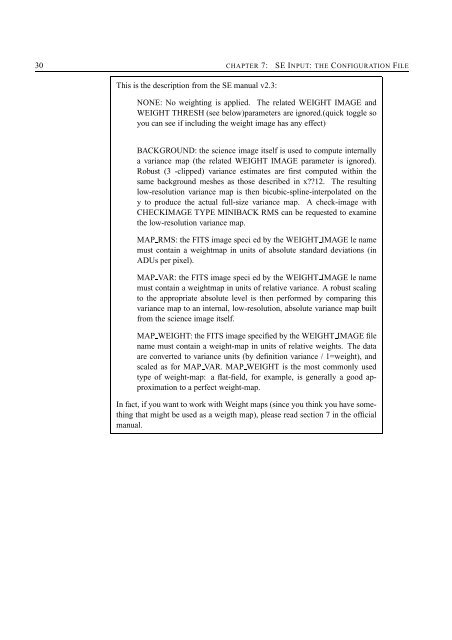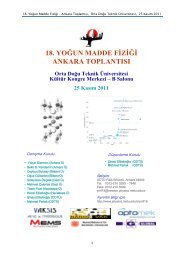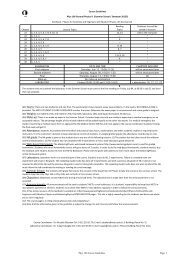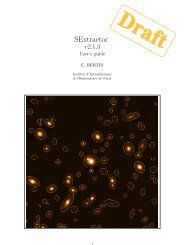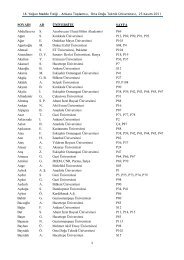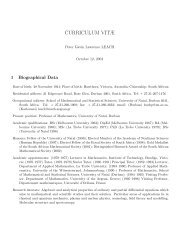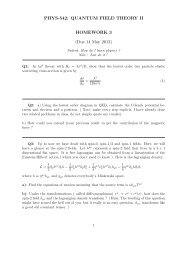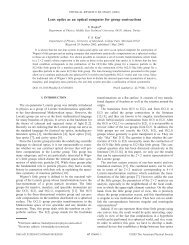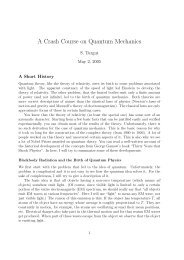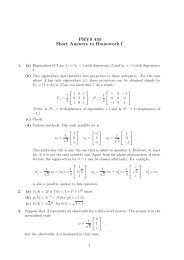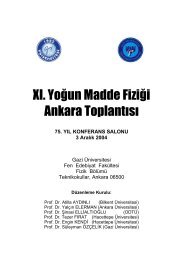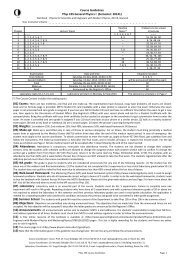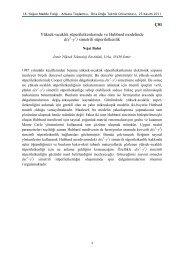Sextractor for dummies - METU Astrophysics
Sextractor for dummies - METU Astrophysics
Sextractor for dummies - METU Astrophysics
You also want an ePaper? Increase the reach of your titles
YUMPU automatically turns print PDFs into web optimized ePapers that Google loves.
30 CHAPTER 7: SE INPUT: THE CONFIGURATION FILE<br />
This is the description from the SE manual v2.3:<br />
NONE: No weighting is applied. The related WEIGHT IMAGE and<br />
WEIGHT THRESH (see below)parameters are ignored.(quick toggle so<br />
you can see if including the weight image has any effect)<br />
BACKGROUND: the science image itself is used to compute internally<br />
a variance map (the related WEIGHT IMAGE parameter is ignored).<br />
Robust (3 -clipped) variance estimates are first computed within the<br />
same background meshes as those described in x12. The resulting<br />
low-resolution variance map is then bicubic-spline-interpolated on the<br />
y to produce the actual full-size variance map. A check-image with<br />
CHECKIMAGE TYPE MINIBACK RMS can be requested to examine<br />
the low-resolution variance map.<br />
MAP RMS: the FITS image speci ed by the WEIGHT IMAGE le name<br />
must contain a weightmap in units of absolute standard deviations (in<br />
ADUs per pixel).<br />
MAP VAR: the FITS image speci ed by the WEIGHT IMAGE le name<br />
must contain a weightmap in units of relative variance. A robust scaling<br />
to the appropriate absolute level is then per<strong>for</strong>med by comparing this<br />
variance map to an internal, low-resolution, absolute variance map built<br />
from the science image itself.<br />
MAP WEIGHT: the FITS image specified by the WEIGHT IMAGE file<br />
name must contain a weight-map in units of relative weights. The data<br />
are converted to variance units (by definition variance / 1=weight), and<br />
scaled as <strong>for</strong> MAP VAR. MAP WEIGHT is the most commonly used<br />
type of weight-map: a flat-field, <strong>for</strong> example, is generally a good approximation<br />
to a perfect weight-map.<br />
In fact, if you want to work with Weight maps (since you think you have something<br />
that might be used as a weigth map), please read section 7 in the official<br />
manual.


